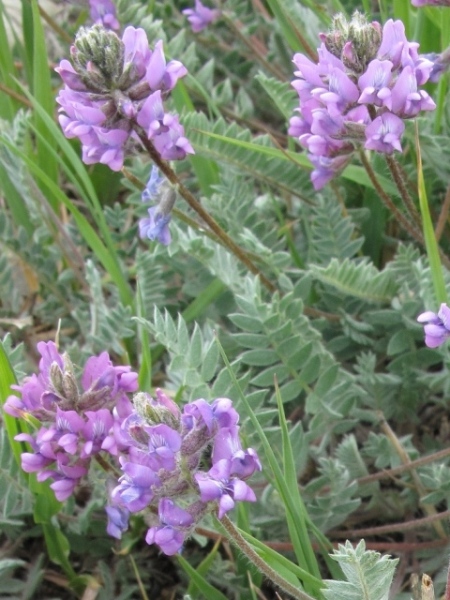Locoweed (4)
The Pea (Fabaceae) family is very large and individual species are often identified by their seed pod rather than their flower. Common names include Milkvetch and Locoweed. The lower petal, the "keel", of the Milkvetch is rounded while the Locoweed is pointed. These are a few of the many.
Lambert's Locoweed
Oxytropis lambertii var. lambertii
Family:
Pea (Fabaceae)
AKA:
Colorado Locoweed, Purple Locoweed
Photo taken on:
July 3, 2011
Location:
Almont Triangle, GV, CO
Life Zones:
Plains to montane
Habitat:
Dry meadows, slopes
Grows erect to 16" with silky, silvery basal leaves and bright rose-purple flowers. It is very poisonous to livestock.
Lambert's Locoweed
Oxytropis lambertii var. bigelovii
Family:
Pea (Fabaceae)
AKA:
Colorado Locoweed, Purple Locoweed
Photo taken on:
May 1, 2015
Location:
SR 84, MM 203, NM
Life Zones:
Plains to foothills
Habitat:
Dry meadows, slopes
Very similar to above but blooms earlier with more compact clusters of flowers just above the leaves.
Pendant-pod Locoweed
Oxytropis deflexa
Family:
Pea (Fabaceae)
AKA: Nodding Locoweed, Reflexed Locoweed
Photo taken on:
July 2, 2010
Location:
Cottonwood Pass Road, CO
Life Zones:
Foothills to subalpine
Habitat:
Moist meadows
Grows to 16" with hairy leaves with 21+ leaflets. Purple flowers are clustered at the top of sprawling, reddish stems and initially point up. Seed pods are grooved and hang down the stem.
Locoweed Hybrid
Oxytropis deflexa-lambertii
Family:
Pea (Fabaceae)
AKA:
Photo taken on:
July 21, 2010
Location:
Union Canyon, CO
Life Zones:
Plains to montane
Habitat:
Meadows, slopes
Less than 12" high with hairy, oval, light green leaflets. A possible hybrid of O. deflexa and O. lambertii above. It looks exactly like "oxytropis def-lam" on the RMBL website growing in the same area of the county.

